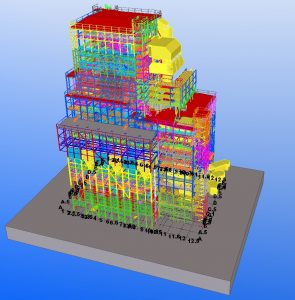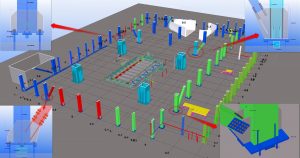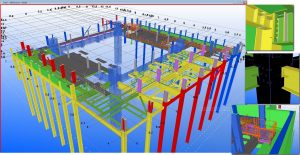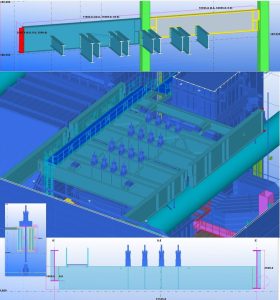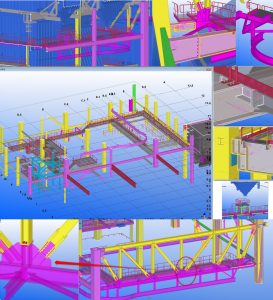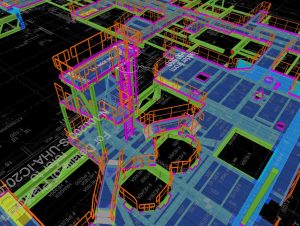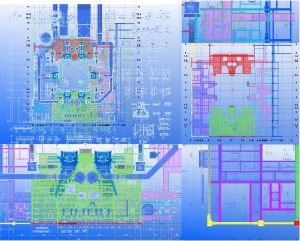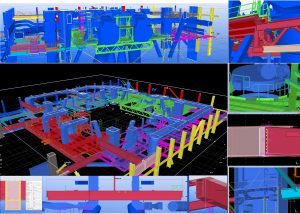 Winnaar publieksprijs - 2018
Winnaar publieksprijs - 2018
 Winnaar van categorie in de landen:
Winnaar van categorie in de landen:
TURÓW – Power Plant

| Categorie | Industriële projecten |
|---|---|
| Jaar | 2018 |
| Land | Poland |
| Organisatie | JAKOSTA Biuro Inżynierskie |
| Auteur | Jakosta, Energoprojekt-Katowice |
| Cliënt | PGE Górnictwo i Energetyka Konwencjonalna S.A. |
| Plaats van constructie | Turów |
| Tags |
Od 2013 roku trwa budowa Nowego Bloku Energetycznego w elektrowni Turów. Nowy blok jest wykonywany w najnowocześniejszej technologii i zastąpi 3 stare bloki o znacznie gorszej sprawności przyczyniajac się do niebagatelnej redukcji emitowanych zanieczyszczeń i CO2. Zadania na zlecenie PGE S.A. podjęło się konsorcjum firmy Mitsubishi Hitachi ze spółką celową BxTR (Budimex i Tecnicas Reunidas), która z kolei zleciła Engergoprojektowi Katowice (EPK) kompleksowe wykonanie i koordynację wielobranżową projektów wykonawczych. W roku 2016 Biuro Jakosta otrzymało zlecenie od EPK na wykonanie projektu warsztatowego ze statyką połączeń budynku kotłowni. Budynek ten wraz z przylegającą bunkrownią i podgrzewaczem powietrza stanowi kompleks zwany wyspą kotłową i jest kluczowym elementem (sercem) nowego bloku.
- Charakterystyczne dane projektu:
- 1) Tonaż: ponad 13500 ton stali nie licząc kanałów wielkogabarytowych (w tym 8000 ton w zakresie Jakosty).
- 2) Wymiary obiektu 60mx86m w planie, 116m wysokości.
- 3) Ciężar pojedynczego elementu wysyłkowego konstrukcji: blisko 100 ton.
- 4) Ponad 6000 formatek A0 (i większych) rysunków warsztatowych i zestawczych.
- 5) Ponad 20 rodzajów stali użytych w projekcie.
Aktualnie (maj 2018) montaż konstrukcji wyspy kotłowej dobiega końca. Budowa raportuje (odpukać w niemalowane drewno) o rekordowo małej ilości błędów, co niewątpliwie świadczy o sukcesie projektu.
- Główne wyzwania:
- 1) Wielkość projektu, ogrom danych do uwzględnienia i skoordynowania w tym ponad 1000 modeli referencyjnych z technologią, urządzeniami itp., często aktualizowanych w trakcie prac projektowych.
Skala projektu wymusiła konieczność podziału konstrukcji na kilka modeli koordynowanych ze sobą na bieżąco.
Model samego budynku kotłowni zawiera ponad 300 tys. części, 60 tys. zespołów. - 2) Ciężka konstrukcja przemysłowa z siłami wewnętrznymi we wszytkich kierunkach liczonymi w mega-newtonach [MN].
- 3) Wysoki stopień szczegółowości projektu:
- – indywidualna statyka węzłów dla każdej pozycji
- – szczegółowe informacje nt. frezowania elementów, badań ultradźwiękowych, przygotowania do sprężania na poziomie pojedynczych elementów
- – mnogość gatunków stali wykorzystywanych w zależności od rodzaju konstrukcji, typu wytężenia elementu, profilu
- 4) Wyjątkowo skomplikowana numeracja pozycji zawierająca w sobie jednocześnie:
- – numer pozycji statycznej,
- – numer “Cubusu” montażowego (lokalizacja w budynku),
- – rodzaj konstrukcji
- – pozycję rozliczeniową (!)
EPK wykonuje kompleksowe projekty branży energetycznej od przeszło 60 lat. Jakosta od ponad 15 lat wykonała wiele projektów wykonawczo-warsztatowych obiektów energetycznych. Słowem, doświadczenie firm współpracujących przy projekcie było kluczowe dla sukcesu.
Niezmiernie ważny był również fakt, że obie firmy korzystają przy projektowaniu konstrukcji z Tekli Structures. Znacznie ułatwiło to koordynację i wymianę danych.
Wieloetapowy proces sprawdzania kolejnych etapów projektu, osobna komórka czuwająca nad usuwaniem kolizji oraz wykorzystanie autorskich komponentów wraz ze wsparciem Open API na szeroką skalę były kolejnym czynnikiem wpływającym pozytywnie na końcową jakość przy jednoczesnym utrzymaniu krótkich terminów realizacji dokumentacji.
New unit has been under construction in Turów, a Power Plant since 2013. This new unit uses the newest technology solutions and will replace 3 old units. Replacement will cause a significant reduction of pollutions and CO2. The owner of Turów Power Plant is PGE Company. Main contractor is a consortium of 2 companies: Mitsubishi Hitachi and BxTR (Budimex and Technicas Reunidas), which has hired Energoprojekt Katowice (EPK) to deliver and coordinate the workshop and execution design for all branches.
In year 2016 Jakosta received a contract from EPK to prepare workshop design of the Boiler House. This building along with Bunker House and Air Preheater building is called Boiler Island, which is the heart of the Power Plant.
Project in numbers:
1) Tonnage: over 13.500 tons without ducts (scope of Jakosta: 8.000,0 tons).
2) Object’s dimensions: 60mx86m, 116m high.
3) Max tonnage of single assembly element: 100 tons.
4) Over 6000 A0 shop and erection drawings.
5) Over 20 grades of steel has been used.
Currently (May 2018) the erection of steel structure is almost completed. Construction site has reported very small amount of minor mistakes, which confirm success of the project.
Main challenges:
1) Project’s size, plethora of data to consider and coordinate including over 1000 reference models of technology, systems etc., updated often
2) Heavy industrial structure with significant internal forces in every direction (values in mega-newtons [MN])
3) High level of detailing:
– individual statical calculation for every joint
– detailed information regarding element’s milling, ultrasound examination, preparation for pre-loading at single part’s level
– various steel grades used in dependence on type of structure, element’s statical utilization type and profile
4) Extremely complex numbering system which consider:
– statical pos. number
– erection “Cubus” (location in structure) number
– type of structure
– billing position (!)
EPK company has been providing services in power industry for over 60 years. Jakosta has successfully delivered many workshop designs of heavy industrial steel structures in last 15 years.
In other words, experience of companies involved in this investment was a key factor to the overall success.
Utilization of Tekla Structures was vital to ensure effective coordination and data exchange.
A multi-stage verification process, designation of an independent checking team along with customized components and utilization of Open API on a large scale were very important for providing finest quality design within given short due dates.
